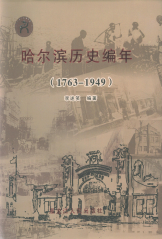
主要责任者: 李述笑
责任方式: 编著
出版者: 黑龙江人民出版社
出版地: 哈尔滨
字数: 1064 千字
页码: 1-486
开本: 16
中图分类号: K293.51
语种:中
定价:180.00
出版时间:2013-01
丛书多卷书否:是
书目简介:本册工具书共收录5569条词条。
被引频次:45
| 词条 | 哈尔滨历史编年 |
| 类别 | 中文百科知识 |
| 释义 |  主要责任者: 李述笑 责任方式: 编著 出版者: 黑龙江人民出版社 出版地: 哈尔滨 字数: 1064 千字 页码: 1-486 开本: 16 中图分类号: K293.51 语种:中 定价:180.00 出版时间:2013-01 丛书多卷书否:是 书目简介:本册工具书共收录5569条词条。 被引频次:45 |
| 随便看 |
开放百科全书收录579518条英语、德语、日语等多语种百科知识,基本涵盖了大多数领域的百科知识,是一部内容自由、开放的电子版国际百科全书。